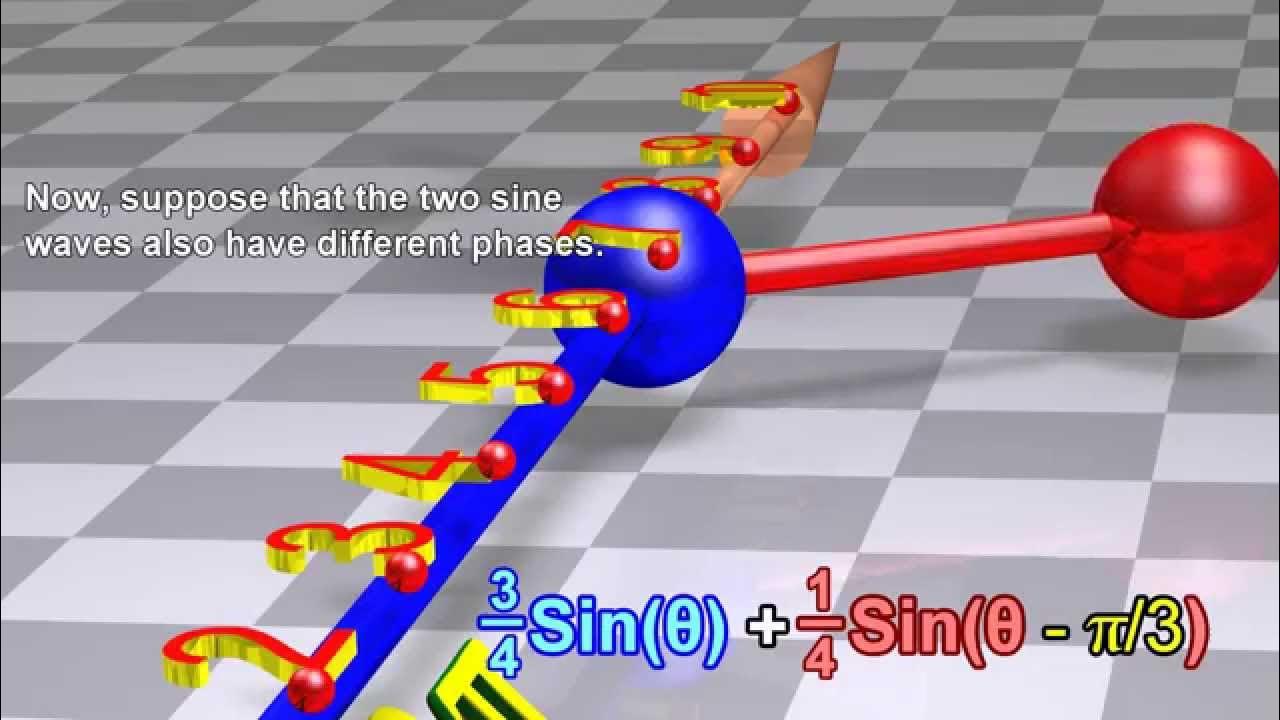Sine Wave | Simple Explanation on a Giant or Ferris Wheel | Trigonometry | Learnability
Summary
TLDRThis video explores the concept of sine waves through everyday examples, such as a rotating giant wheel. It explains how the vertical motion of the wheel creates a sine wave and why the shape of the wave is crucial in understanding oscillations. The video also discusses how the amplitude and frequency of sine waves are affected by changes in the size and speed of the wheel. Additionally, it delves into the origins of the word 'sine,' tracing it back to Sanskrit, Arabic, and Latin. The video concludes by comparing sine waves and cosine waves, both key elements in understanding circular motion.
Takeaways
- 😀 Sine waves are present in various phenomena like light, sound, mechanical springs, and even electricity in your home.
- 😀 The sine wave gets its shape from vertical motion during a circular rotation, as demonstrated by the Hong Kong observation wheel.
- 😀 When viewed from the side, the circular motion of the wheel is simplified into a vertical up-and-down motion, which forms the sine wave when plotted against time.
- 😀 A sine wave oscillates back and forth from a start position to a maximum amplitude, reflecting a simple circular motion.
- 😀 The amplitude of a sine wave can change if the size of the wheel (or the oscillation's maximum height) changes, stretching only the vertical direction of the graph.
- 😀 If the time to complete a cycle (the rotation speed) changes, the sine wave's frequency (speed of oscillation) will adjust, stretching the wave horizontally.
- 😀 A sine wave can also be plotted in terms of the angle of rotation (phase) rather than time, with the angle measured in degrees.
- 😀 The word 'sine' originates from the Sanskrit term 'jiva,' which means 'half chord,' and evolved through Arabic to Latin before being adopted into English.
- 😀 The history of the word 'sine' traces back to AD 499 and is linked to early mathematical concepts used by Indian mathematicians.
- 😀 The video ends with a comparison between two giant wheels of different sizes and rotation speeds, encouraging viewers to determine which one rotates faster based on its sine wave representation.
Q & A
What is the basic concept of a sine wave explained in the video?
-The sine wave represents oscillations that move up and down, similar to the motion of a red square on a rotating giant wheel. The sine wave's shape is formed by plotting the vertical position of the square over time.
How does the video explain the connection between circular motion and sine waves?
-The video explains that sine waves are one of the components of simple circular motion. By breaking down the circular motion of a giant wheel into vertical and horizontal components, the vertical motion can be plotted as a sine wave.
What is the meaning of amplitude in the context of a sine wave?
-Amplitude refers to the maximum distance a sine wave reaches in either direction from its starting position. It represents the highest or lowest point in the wave's oscillation.
What happens to the sine wave if the amplitude of the giant wheel increases?
-If the amplitude increases, the sine wave stretches vertically. This means the vertical range of the sine wave becomes larger while the time duration remains the same.
What happens to the sine wave if the giant wheel rotates faster?
-When the giant wheel rotates faster, the sine wave gets compressed horizontally, meaning the oscillations occur more rapidly, and the wave stretches in the time direction.
How does the time axis relate to sine waves in the video?
-The time axis represents how the position of the red square changes over time as the giant wheel rotates. The sine wave's shape is plotted against this time axis, showing the vertical motion of the square as it oscillates up and down.
What is the role of the angle in sine wave analysis, according to the video?
-The video introduces an alternative way to plot sine waves by using an angle (called phi) instead of time. The angle represents the phase of the sine wave and is measured in degrees, with 360 degrees completing one full oscillation.
How did the word 'sine' originate, based on the video?
-The word 'sine' originates from a Sanskrit word 'jiva' meaning half chord, which evolved through Arabic as 'jibba' and was later translated into Latin as 'sinus,' meaning 'bay' or 'breast'. Eventually, the term 'sinus' became 'sine' in English.
Why does the video refer to a sine wave as a 'circular motion' component?
-The sine wave is a component of circular motion because it describes the vertical displacement of an object in uniform circular motion, like the red square on the giant wheel. This vertical motion, when plotted over time, forms a sine wave.
What question does the video ask the viewers to answer related to the giant wheels?
-The video asks viewers to determine which giant wheel is rotating faster, the red or the blue one, based on the position vs time graph, and invites them to comment with their answer.
Outlines

This section is available to paid users only. Please upgrade to access this part.
Upgrade NowMindmap

This section is available to paid users only. Please upgrade to access this part.
Upgrade NowKeywords

This section is available to paid users only. Please upgrade to access this part.
Upgrade NowHighlights

This section is available to paid users only. Please upgrade to access this part.
Upgrade NowTranscripts

This section is available to paid users only. Please upgrade to access this part.
Upgrade NowBrowse More Related Video
5.0 / 5 (0 votes)





